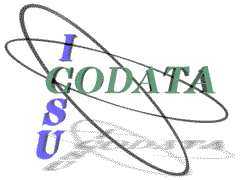Senckenberg Research Institute and Museum, Frankfurt
Botanical Garden and Botanical Museum Berlin-Dahlem
Senckenberg Research Institute and Museum, Frankfurt |
Botanical Garden and Botanical Museum Berlin-Dahlem |
TDWG 2000: Digitising Biological Collections
Taxonomic Databases Working Group, 16th Annual Meeting
Senckenberg Museum, Frankfurt, Germany, November 10-12, 2000
* National Commission for the Knowledge and Use of Biodiversity (CONABIO), Mexico
[Presentation and poster]
Due to the vast array of databases that already exists, and the diverse data derived from the projects sponsored by CONABIO, it was necessary to develop a unique model for the management of biological data held in collections. This model is called BIOTICA© and is able to hold and manage the variable biological information available.
One of the main goals of CONABIO is the implementation of the National Biodiversity Information System (SNIB). For this purpose CONABIO released version 3.1 of BIOTICA© (http://www.conabio.gob.mx/biotica_ingles/v3.1.0_0.html). This current version of the program was developed in two modules, one holding the actual database, the other the program code. The implementation takes into account the diverse requirements for a service which is to serve the entire biological community, including taxonomists, biogeographers, ecologists, etc.
This version of BIOTICA© is user friendlier and faster than previous versions, and it provides a validation process for geographic data. It is divided into eight parts: database, directory, nomenclature, curation, geography, bibliography, tools and help. It was developed using Visual Basic© version 6.
Among other features, BIOTICA© offers:
Currently, CONABIO is developing a new version of BIOTICA© (version 4.0), which will ecological and uses data.
A software (Mallos gregalis©, named after a social spider endemic to Mexico) was developed to access the distributed taxonomic databases which form the backbone of SNIB. It is the gateway engine of the Mexican Biodiversity Information Network (REMIB) (http://www.conabio.gob.mx/remib/remib.html).
REMIB operates with institutions that own databases on biodiversity and natural resources of Mexico, which act as nodes, and their researchers or experts are the responsibles of the information. Nodes are institutions where scientific biological collections or other sources of original data on biodiversity are physically located, as well as servers where the data reside. The central node is housed at CONABIO, which does not hold scientific collections but which takes responsibility for the SNIB taxonomic databases, and for the consolidation and updating of the network.
TDWG | Participants | Presentations | Senckenberg Museum | BGBM Biodiversity Informatics
|
This meeting was co-sponsored by the Committee on Data for Science and Technology (CODATA) |
 |
Page editor: W. Berendsohn, wgb@zedat.fu-berlin.de. © BGBM 2000.